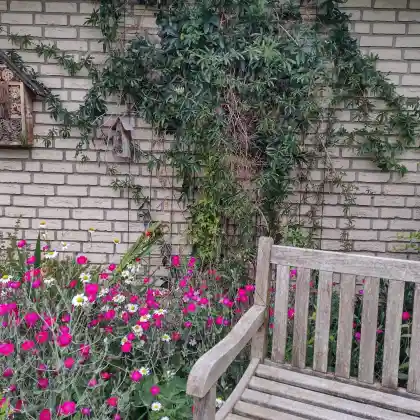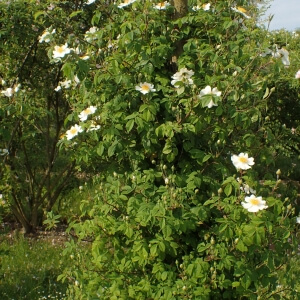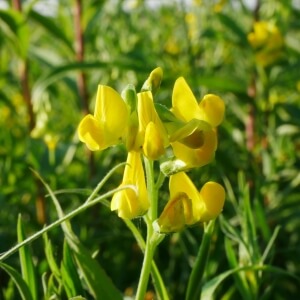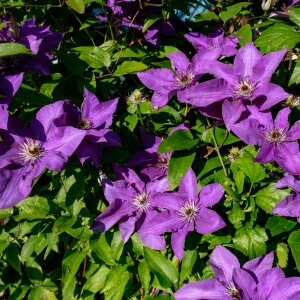R. Vogt
Kletterpflanzen für sonnigen Vorgarten
Sonnenseiten clever nutzen – mit blühenden Kletterkünstlern
Du hast eine sonnige Hauswand, einen Zaun oder ein Rankgitter im Vorgarten? Dann wird’s Zeit für Kletterpflanzen! Sie bringen auf kleiner Fläche ganz große Wirkung: Farbenpracht, Sichtschutz, Kühle – und ein Paradies für summende Gäste. Ob romantische Blüten oder grüner Sichtschutz – vertikale Gärten machen deinen Vorgarten lebendig und naturnah.
Hier findest du ausgewählte Kompositionen - lass dich inspirieren.
Warum du und die Natur von Kletterpflanzen profitieren
- Mehr Blüten pro Quadratmeter – perfekt für kleine Vorgärten mit wenig Platz
- Nahrungsquelle für Insekten – vor allem Wildbienen, Schmetterlinge & Co. wie Gehörnte Mauerbiene (Osmia cornuta) und Kleiner Fuchs (Aglais urticae)
- Verstecke & Nistplätze für Tiere – dichtes Blattwerk bietet Lebensraum
- Klimaschutz am Haus – grüne Wände spenden Schatten & verbessern das Mikroklima
- Mehr Privatsphäre & Gemütlichkeit – ohne Mauer oder Zaun
So bringst du Leben an sonnige Wände
- Standort prüfen: Vollsonnig bis leicht halbschattig ist ideal
- Rankhilfe nötig? Ja – z. B. Spalier, Zaun, Gitter oder Pergola
- Boden vorbereiten: Locker, humos und durchlässig – Staunässe vermeiden
- Einpflanzen & angießen: Frühjahr oder Herbst ist ideal – gut wässern
- Wuchs beachten: Wähle schwachwachsende Arten für kleine Flächen
Tipp für heiße Standorte: Kombiniere Kletterpflanzen mit flachen Bodendeckern – sie halten den Wurzelbereich kühl und fördern zusätzlich die Artenvielfalt.
Kletterpflanzen im Kübel – grün auch ohne Gartenboden
Auch wenn dein Vorgarten gepflastert ist, musst du nicht auf Kletterpflanzen verzichten:
- In großen Kübeln wachsen viele Arten genauso gut
- Wichtig sind ein durchlässiger Boden, ausreichend Volumen und eine passende Rankhilfe
- So kannst du Hauswände, Carports oder Rankgitter auch auf versiegelten Flächen begrünen – ein Gewinn für dich, dein Zuhause und die Tierwelt












































